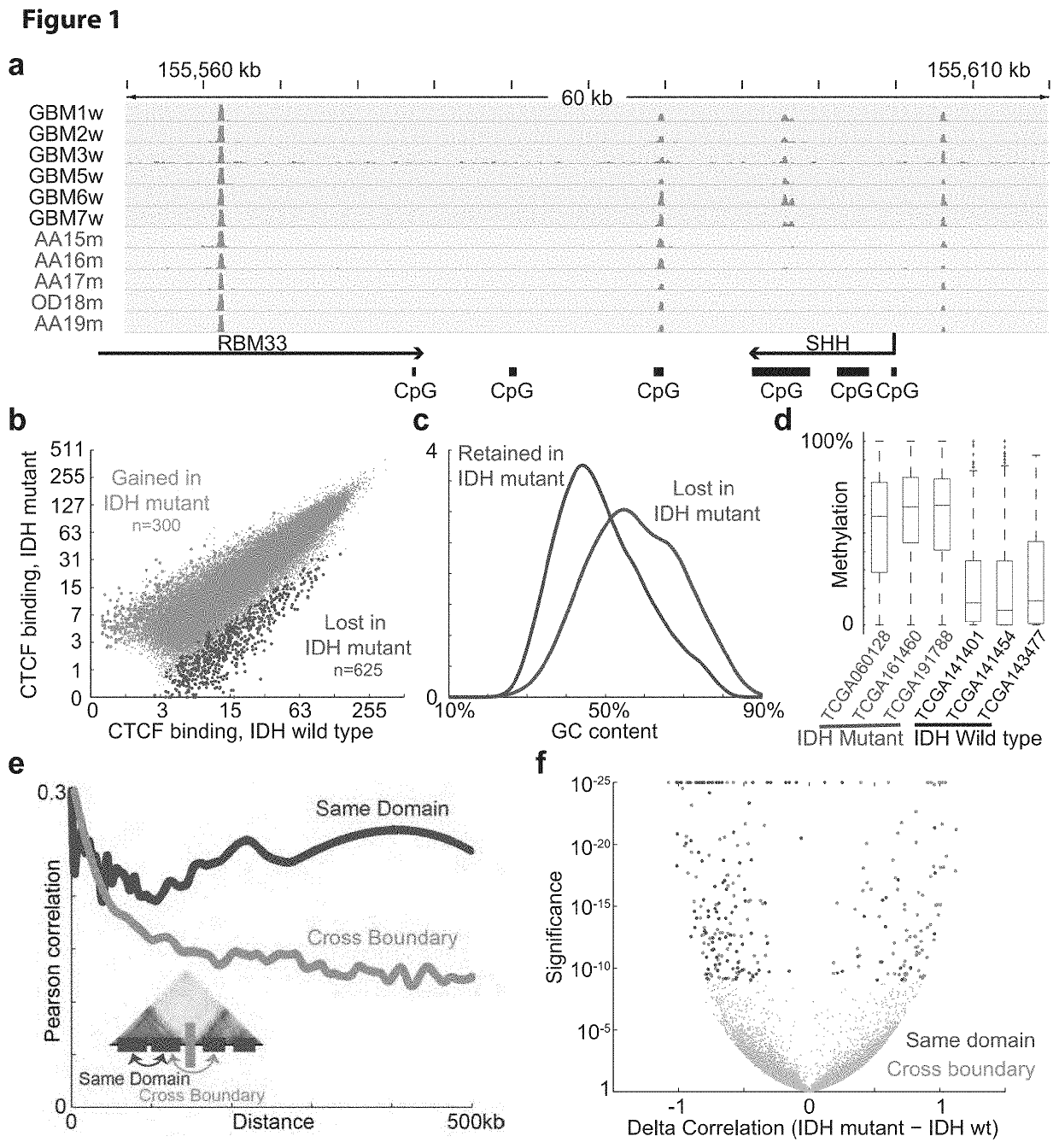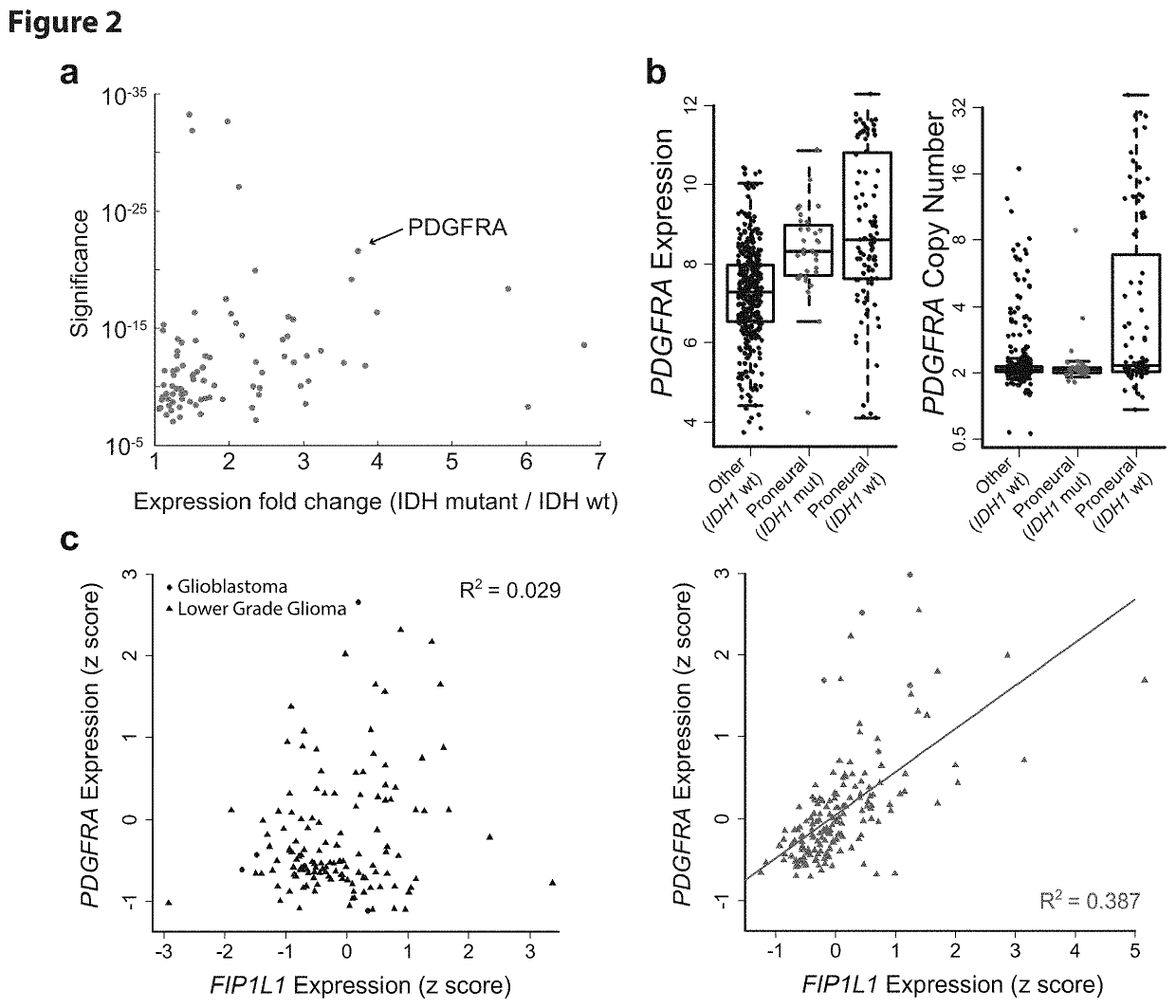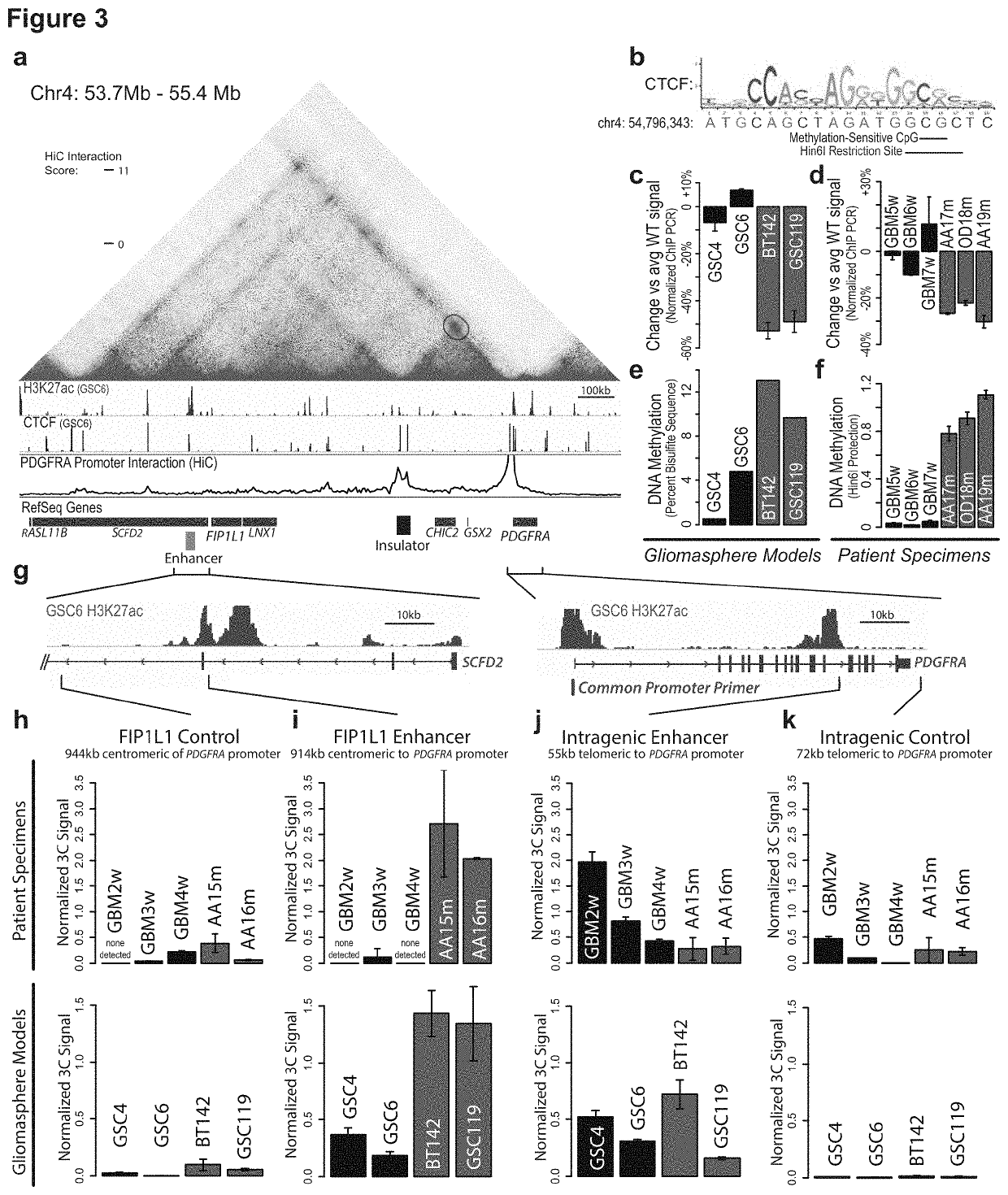Methods of detecting insulator dysfunction and oncogene activation for screening, diagnosis and treatment of patients in need thereof
a technology of insulator and oncogene, applied in the field of diagnosis and treatment of diseases, can solve the problems of subject at high risk of developing cancer, and achieve the effect of reducing ctcf binding and loss of insulation function
- Summary
- Abstract
- Description
- Claims
- Application Information
AI Technical Summary
Benefits of technology
Problems solved by technology
Method used
Image
Examples
example 1
CTCF Binding and Gene Insulation is Compromised in IDH Mutant Gliomas
[0430]Since CTCF binding is methylation-sensitive18,19, its localization might be altered by DNA hyper-methylation in IDH mutant gliomas. Applicants therefore used ChIP-seq to map CTCF binding genome-wide in eleven primary tumors and four glioma lines. Although CTCF binding patterns tend to be relatively stable, Applicants detected highly overlapping subsets of CTCF sites lost in IDH mutants (FIG. 1a-b; see Methods). Significantly more sites were commonly lost than gained (625 vs 300, p−12). Applicants used whole genome bisulfite sequencing data from the Cancer Genome Atlas (TCGA)10 to assess the methylation status of 625 loci with reduced CTCF binding in mutant tumors. Applicants found that these loci have higher GC content, and exhibit significantly higher levels of DNA methylation in IDH mutant gliomas, relative to IDH wildtype (FIG. 1c-d).
[0431]Applicants considered that altered DNA methylation and CTCF binding...
example 2
Topological Domain Boundaries are Disrupted in IDH1 Mutant Gliomas
[0433]Applicants next sought to pinpoint specific boundaries disrupted by IDH mutation. For all pairs of genes separated by <1 MB, Applicants computed their correlation across IDH mutant gliomas and across wildtype gliomas. Applicants then scanned for loci in which cross-boundary gene pairs correlate more strongly in mutant tumors (FDR<1%), while intra-domain gene pairs correlate less strongly (FDR<1%). This analysis highlighted 203 domain boundaries (FIG. 2a; Table S1; see Methods). The putatively disrupted boundaries exhibit higher DNA methylation and lower CTCF binding in IDH mutant tumors, relative to wildtype (FIG. 5). These data suggest that the methylator phenotype disrupts CTCF binding and domain boundaries, thereby affecting gene expression in IDH mutant gliomas.
[0434]Applicants hypothesized that altered domain topologies might contribute to gliomagenesis by activating oncogenes that are normally insulated by...
example 3
Insulator Loss Allows PDGFRA to Interact with a Constitutive Enhancer
[0436]Applicants therefore investigated the topology of the region using kilobase-resolution HiC data15. In all six cell types examined, PDGFRA and FIP1L1 reside in distinct domains, separated by one CTCF-anchored constitutive boundary (FIG. 3a, FIG. 7). Our ChIP-seq data confirm that this boundary contains a strong CTCF binding site over a canonical CTCF motif with a CpG dinucleotide in a position previously linked to methylation-sensitivity25 (FIG. 3b). Quantitative ChIP-PCR reveals that CTCF occupancy at this site is reduced between 30% and 50% in IDH mutant tumors and gliomasphere models, relative to wildtype (FIGS. 3c,d). Moreover, the CpG in this motif becomes highly methylated in IDH mutants (FIGS. 3e,f). This suggests that reduced CTCF binding may compromise the boundary flanking PDGFRA in IDH mutant, hyper-methylated tumors.
[0437]To identify regulatory elements that might underlie PDGFRA induction, Applica...
PUM
| Property | Measurement | Unit |
|---|---|---|
| Electric charge | aaaaa | aaaaa |
Abstract
Description
Claims
Application Information
 Login to View More
Login to View More - R&D
- Intellectual Property
- Life Sciences
- Materials
- Tech Scout
- Unparalleled Data Quality
- Higher Quality Content
- 60% Fewer Hallucinations
Browse by: Latest US Patents, China's latest patents, Technical Efficacy Thesaurus, Application Domain, Technology Topic, Popular Technical Reports.
© 2025 PatSnap. All rights reserved.Legal|Privacy policy|Modern Slavery Act Transparency Statement|Sitemap|About US| Contact US: help@patsnap.com



